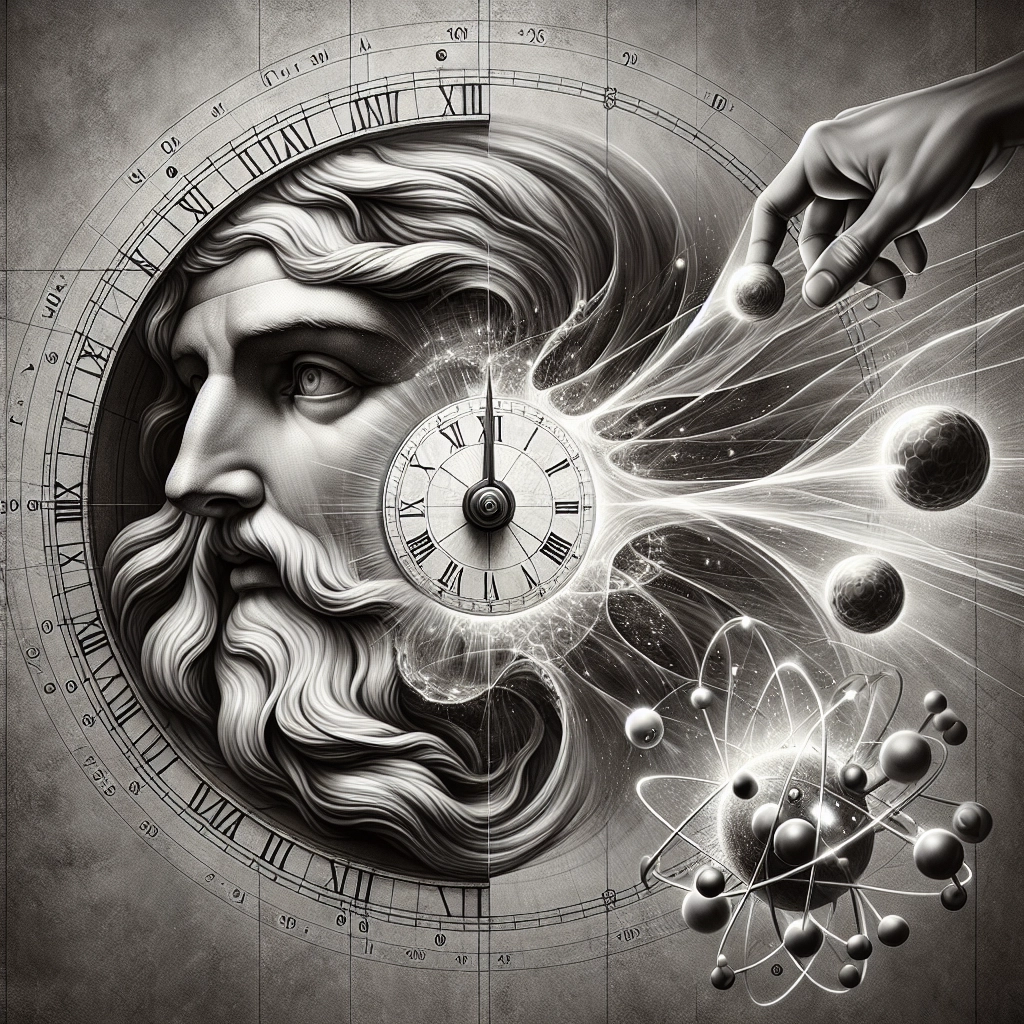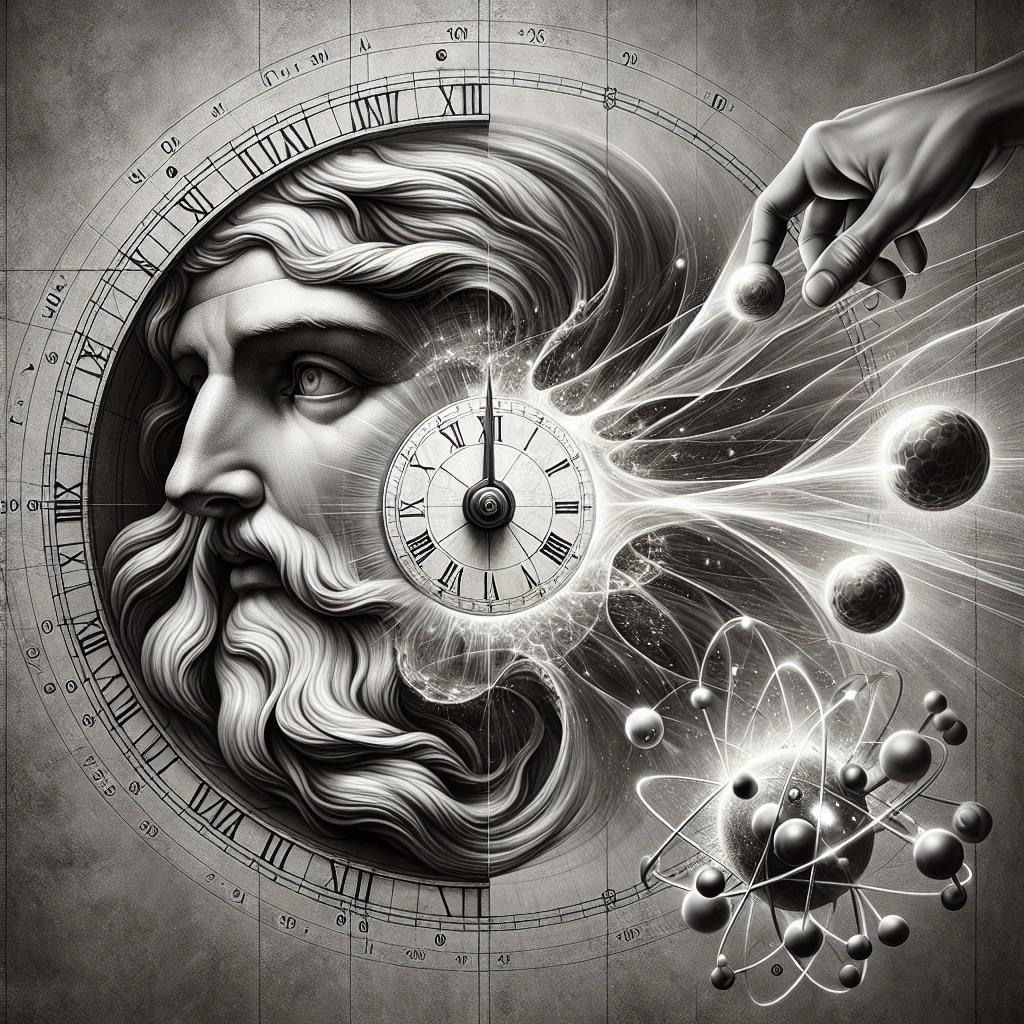The Warping of Time: From Light Speed to Particle Temperature
 Quantum Cyber Solutions
Quantum Cyber Solutions

Published on
Sunday, May 12, 2024
The Warping of Time: From Light Speed to Particle Temperature
=================================================================
Authors

Name
Eric deQuevedo 😄
Twitter
⏰ The Elasticity of Time: A Relativistic Perspective
Time, once thought to be an immutable constant, has been revealed to be a malleable entity that can stretch and contract depending on the observer's frame of reference. This mind-bending concept, known as time dilation, is a cornerstone of Einstein's special theory of relativity. Let's explore how time bends as objects approach the speed of light.
🚀 Time Dilation: Slowing Down at High Velocities
According to special relativity, as an object's velocity approaches the speed of light, time begins to slow down for that object relative to a stationary observer. This phenomenon is described by the time dilation formula:
$
Δt′=Δt1−v2c2\Delta t' = \frac{\Delta t}{\sqrt{1 - \frac{v^2}{c^2}}}Δt′\=1−c2v2Δt
$
Where:
Δt′\Delta t'Δt′
is the time interval experienced by the moving object
Δt\Delta tΔt
is the time interval experienced by the stationary observer
vvv
is the velocity of the moving object
ccc
is the speed of light (approximately 299,792,458 meters per second)
As the velocity (
vvv
) approaches the speed of light (
ccc
), the denominator of the fraction approaches zero, causing the time interval experienced by the moving object (
Δt′\Delta t'Δt′
) to increase dramatically. In other words, time slows down significantly for objects traveling at relativistic speeds.
🌍 Everyday Examples of Time Dilation
While the effects of time dilation are most noticeable at velocities close to the speed of light, they can also be observed in everyday situations:
- GPS Satellites: GPS satellites orbit the Earth at high speeds, experiencing time dilation relative to clocks on the ground. To maintain accurate timekeeping, GPS systems must account for this relativistic effect.
- Particle Accelerators: In particle accelerators, such as the Large Hadron Collider (LHC), subatomic particles are accelerated to near-light speeds. At these velocities, the particles experience time dilation, allowing scientists to study their behavior and interactions.
🌡️ Temperature: The Dance of Molecules
Temperature, a concept familiar to us all, is fundamentally linked to the motion of molecules. The faster the molecules move, the higher the temperature. Let's explore how temperature is related to molecular speed and how it can affect the perception of time for particles.
🏃♂️ Kinetic Energy and Temperature
The kinetic energy of a molecule is directly proportional to its temperature. The average kinetic energy of molecules in a substance is given by:
$
12mv2=32kBT\frac{1}{2}mv^2 = \frac{3}{2}k_BT21mv2\=23kBT
$
Where:
mmm
is the mass of the molecule
vvv
is the average velocity of the molecules
kBk_BkB
is the Boltzmann constant (approximately 1.380649 × 10^-23 J/K)
TTT
is the absolute temperature in Kelvin
As the temperature increases, the average velocity of the molecules also increases. This means that at higher temperatures, molecules are moving faster and colliding more frequently.
⏰ Temperature and Time Perception for Particles
The increased molecular speed at higher temperatures can affect the perception of time for individual particles. As particles move faster, they experience time dilation relative to slower-moving particles. This effect is described by the relativistic time dilation formula mentioned earlier.
However, it's important to note that the time dilation experienced by individual particles due to temperature is extremely small and typically negligible in everyday situations. The velocities of molecules, even at high temperatures, are still far below the speed of light, where relativistic effects become significant.
🌌 Implications and Future Explorations
The warping of time at relativistic speeds and the influence of temperature on particle motion have profound implications for our understanding of the universe:
- Cosmic Phenomena: Relativistic time dilation plays a crucial role in understanding cosmic phenomena, such as the behavior of black holes, the dynamics of high-energy astrophysical jets, and the evolution of the early universe.
- Quantum Realm: The interplay between temperature and particle motion is fundamental to the study of quantum mechanics, where the wave-particle duality of matter becomes apparent at microscopic scales.
- Technological Advancements: The understanding of time dilation and the manipulation of particle speeds have led to groundbreaking technologies, such as particle accelerators, atomic clocks, and precision GPS systems.
As we continue to explore the mysteries of time and temperature, new discoveries and insights await us. From the vastness of the cosmos to the intricacies of the quantum world, the warping of time and the dance of molecules offer endless opportunities for scientific exploration and technological innovation.
🔍 Conclusion
The elasticity of time and the relationship between temperature and particle motion are fascinating concepts that challenge our intuitive understanding of the world. By grasping the principles of time dilation and the kinetic energy of molecules, we can begin to appreciate the complex tapestry of the universe, where time and temperature intertwine in a cosmic dance.
As we continue to push the boundaries of scientific knowledge, it is essential to communicate these complex ideas in accessible ways, inviting everyone to marvel at the wonders of physics. By bridging the gap between equations and everyday experiences, we can foster a deeper appreciation for the beauty and intricacy of the natural world.
So the next time you ponder the nature of time or feel the warmth of a summer day, remember the incredible physics at play – the warping of time at cosmic scales and the tireless dance of molecules that define our reality. The universe is a stage where time and temperature take center stage, and we are all witness to their awe-inspiring performance.
Discuss on Twitter • View on GitHub
Tags
Time Dilation
Relativity
Temperature
Particle Physics
Kinetic Energy
Time Perception
Previous Article
Harnessing Nikola Teslas Legacy The Path to Secure Energy and Wireless Power Transmission
Next Article
Mushroom Mycelium: The Key to Interstellar Exploration and Extraterrestrial Civilizations
Subscribe to my newsletter
Read articles from Quantum Cyber Solutions directly inside your inbox. Subscribe to the newsletter, and don't miss out.
Written by
